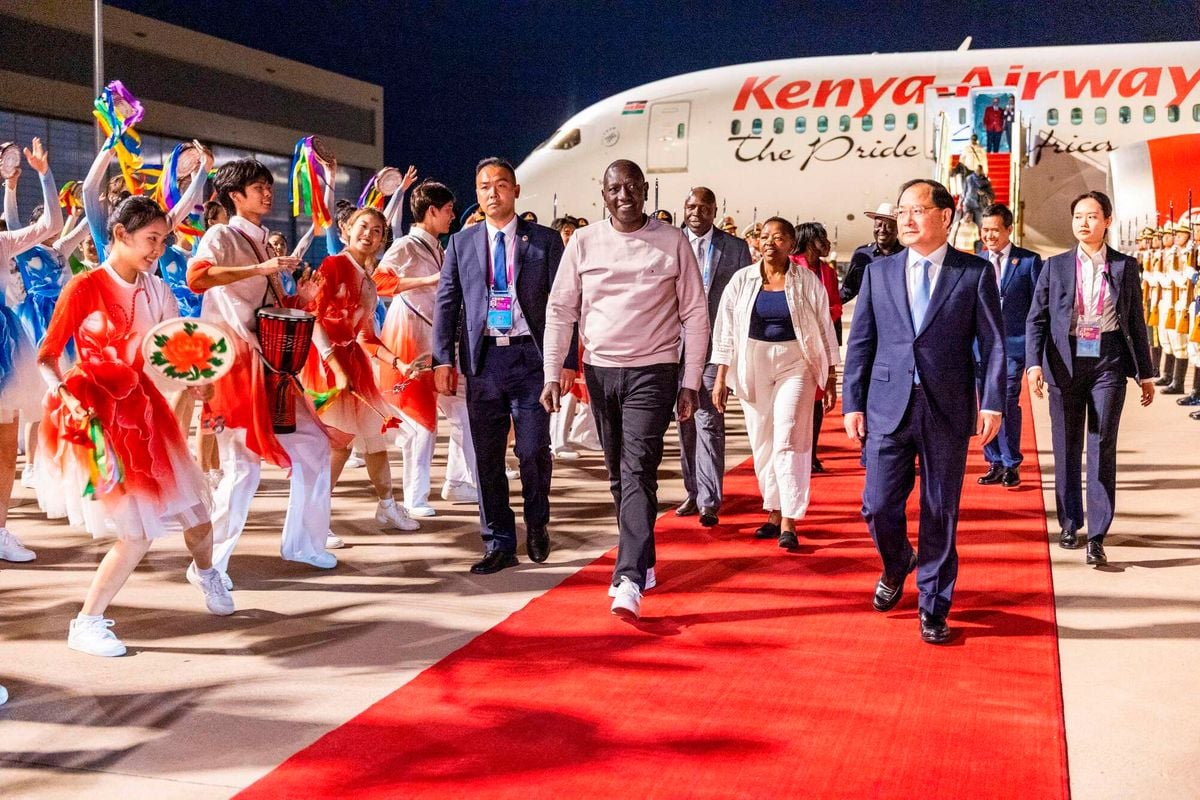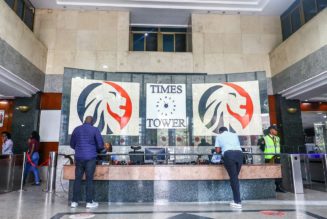
President William Ruto will this week seek to unlock the five-year freeze of Chinese loans at a summit of African nations in Beijing as China tweaks conditions for its lending to the continent.
Dr Ruto on Sunday embarked on a near week-long visit to the world’s second largest economy, where he is expected to hold bilateral talks with his host, President Xi Jinping, ahead of the three-day Forum on China–Africa Cooperation (Focac) ending Friday.
Kenya will seek assurances on the progress of incomplete Chinese-funded infrastructure projects, notably the extension of the standard gauge railway (SGR) from Naivasha to the border town of Malaba and dualling of a Nairobi bypass.
The hunt for Chinese deals comes in a period when the flow of loans from Beijing to Africa has changed significantly, with the giant Asian nation reducing debt and avoiding its earlier pet projects like roads, ports and railways.
Beijing has also grown fretful about Africa’s debt vulnerability, which has seen three countries—Ethiopia, Ghana and Zambia—default on their foreign loan payments.
Kenya, which has been a key beneficiary of Chinese loans in the continent, last inked a debt deal with Beijing in 2019, says a study by Boston University Global Development Policy Center– which runs the Chinese Loans to Africa (CLA) Database project.
At the time, Export-Import Bank of China committed to provide funding for Konza Data Centre and Smart City Facilities to the tune of $166.7 million (about Sh21.67 billion under prevailing conversion rate of Sh130 per dollar) and Kenya Power Transmission Expansion Project at a cost of $83.3 million (Sh10.83 billion).
Findings of the CLA Database project suggest Kenya and Ethiopia were among the top five recipients of Chinese loans on the continent that have missed out on new deals with Beijing post Covid-19 pandemic.
This includes $4.61 billion (Sh599.3 billion) in 13 loan commitments to eight African countries, including Nigeria and Egypt in 2023, the first growth in seven years.
“The sectoral breakdown of 2023 loan commitments suggest Chinese lenders used the pandemic years to re-evaluate past lending behaviour and have begun to implement new strategies for risk mitigation, as well as targeted lending that addresses strategic goals more efficiently and effectively,” CLA Database researchers wrote in a policy brief ahead of this week’s meeting in Beijing.
“The prominence of Chinese lending to African financial institutions in 2023 stands out as unique when compared to previous years’ lending. Five loans worth a combined $2.59 billion [about Sh336.7 billion], more than half the total for 2023, were extended to multilateral and nationally owned banks in Africa.”
Strategy shift
The study, which tracks loans signed between 2000 and 2023, shows that Chinese loans disbursed through multilateral and national lenders on the continent accounted for 5.29 percent of total funding to Africa up to 2022.
The tables turned in 2023 when Chinese loans to the financial sector for on-lending made up 56.18 percent of the total funding, signalling the shift in Beijing’s lending strategy.
“Targeted lending to African financial institutions for purposes of trade finance promotion and on-lending to SMEs represents a risk mitigation strategy that entails outsourcing the ‘picking of winners’ to African institutions with more in-depth knowledge of African markets,” the study states.
Africa featured prominently in the initial years of Belt and Road Initiative (BRI), as China sought to recreate the ancient Silk Road and extend its geopolitical and economic influence through a global infrastructure development push.
China, however, started to turn off the debt taps in 2019, a shift that was accelerated by the pandemic, leaving a series of incomplete projects around the region, including the SGR from Naivasha to Malaba that is meant to link Kenya with its neighbours.
The freeze in fresh loans to Kenya since 2019 has seen Egypt race ahead of Kenya in value of loans from China, rising to third place last year from fifth in 2019.
Chinese loans to Egypt grew the fastest at 14.12 percent amongst the top recipients in Africa, largely supported by $988 million (Sh128.44 billion) to the Central Bank of Egypt (CBE) and $300 million (Sh39 billion) to National Bank of Egypt (NBE).
The stock of loans in Egypt rose to $9.7 billion (Sh1.26 trillion) in 2023 from $8.5 billion (Sh1.1 trillion) in 2019, behind Angola’s $46 million (Sh5.98 trillion) and Ethiopia’s $14.5 billion (Sh1.89 trillion).
Loans to Nigeria grew 11.63 percent in the post-pandemic to $9.6 billion (Sh1.25 trillion) last year from $8.6 billion (Sh1.1 trillion) in 2019.
Dr Ruto is expected to negotiate loan deals for phase 2B and 2C of the SGR project (between Suswa near Naivasha to Kisumu and onto Malaba), construction of rural roads in Kenya, the Nairobi Intelligent Transport System, establishment of a pharmaceutical park and completion of third phase of the upgrading of equipment in technical and vocational education and training (TVET) centres.
Last year, Nigerian government signed $973 million (Sh126.49 billion) for Lagos-Kano Railway (1400km) and Kaduna-Kano Section (200km), according to CLA Database, while Angola inked $249 million(Sh32.37 billion) loan deal for National Broadband Project.
Chinese lenders — Export-Import Bank of China and China Development Bank — also disbursed $1 billion (Sh130 billion) disbursements to Cairo-headquartered African Export–Import Bank (Afreximbank) and Lagos-based Africa Finance Corporation ($300 million) for on-lending to traders.
“Though trade finance and SME support facilities may not appear to promote Chinese commercial objectives as effectively as the more common ‘tied’ infrastructure loans that mandate the use of Chinese goods and services, trade finance and SME support facilities address both Chinese diplomatic and economic goals,” the report suggests.
“They allow China to deliver on the promise of promoting development and entrepreneurship in Africa while simultaneously enabling African businesses to import goods from China.”









